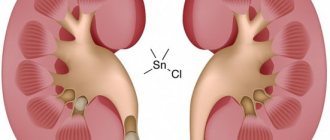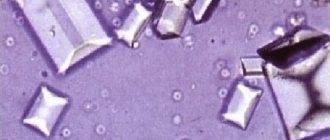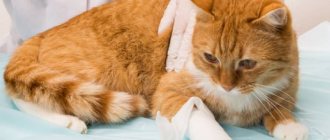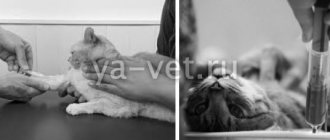During the process of urination, some factors may often appear that indicate the presence of a particular disease in the body, in particular this applies to early problems with the renal system. So, for example, the presence of foreign inclusions and sediment, foam or a change in shade may indicate the active development of some pathology. The most common phenomenon is the appearance of foam in the urine; this fact can be caused by various factors that are not always a symptom of the disease.
Basically, against this background, foamy urine appears when a person has endured the urge to urinate for a long time, and this may well be the case (a lot of urine during urination), as a result of which the physiological release of liquid is carried out under great pressure, and there is a usual saturation of it with air bubbles , which look like foam in the toilet. A common physiological reason for foaming urine is a significant decrease in blood volume under the influence of hot weather and heavy physical exertion. An increased degree of concentration is formed similarly under the influence of a foam concentrate, as a result of which the prerequisites for the appearance of bubbles arise. It is necessary to competently be able to distinguish such a phenomenon from the formation of white discharge on the surface of emitted urine, with a characteristic appearance of mucous secretion, which is secreted by special cells. Such a secretion must be eliminated before the liquid is collected for analysis.
If foam appears in the urine, you should think about the causes of this condition.
Very often, many people ask the question: in what cases should one be afraid of the appearance of a lot of foam in the urine? There are sometimes reasons for such manifestations that cannot be considered completely harmless. The main distinguishing characteristic is consistency and regularity. In the case when foam in the urine is observed daily, regardless of water balance and diet, then this is a serious reason to urgently consult a doctor.
This is explained by the fact that this is how massive is defined. In parallel with the above, there is a persistent pathology in the kidney filtration system, because of this, protein, which is an important structural substance for the construction of new cells in the body, penetrates from the blood into the urine. But its excess indicates not only the presence of amyloidosis, but also a significant lack of protein in other systems and organs.
In addition to renal pathology, the following may similarly manifest themselves:
- prolonged stress that negatively affects the state of the nervous system;
- disorders of brain structures;
- concussion;
- disruptions in cerebral circulation;
- certain types of metabolic disorders;
- autonomic nervous dysfunction, hypertension;
- heart failure;
- advanced diabetes mellitus.
Thus, the patient almost always experiences similar symptomatic manifestations. It should be noted that this condition is dangerous because regularly appearing foam may not be accompanied by other characteristics of the disease; in such situations, there is a possibility that the appearance of amyloidosis can be predicted in the future; it could also be bacterial vaginosis.
Contact your doctor with your problem and undergo the necessary examination
How to treat?
If you begin to notice foam in your urine, you need, first of all, to make sure that your body continues to receive the amount of fluid it needs. To do this, you should increase your drinking ration per day to 2.5 liters of clean water. Next, be sure to monitor the degree of cleanliness of the toilet, and first carry out thorough sanitization using a disinfectant.
The fact is that urine tends to have a strong bactericidal effect, therefore, when it gets on a surface that is densely covered with microbes, foamy formations can be observed, which are explained by the death of bacteria. If foamy urine is noticed continuously for 5 days, immediately contact a specialist with a request to conduct a detailed urine analysis; it would also not be superfluous to conduct an ultrasound examination of the kidneys, especially this should be done when you notice white flakes.
The composition of urine plays an important role in identifying various diseases of the body. But its characteristics, in most cases, affect the state of the renal system. For example, the appearance of sediment or any inclusions does not serve as a positive quality of the urinary organs. However, most often people experience foam in their urine. This sign indicates both the development of pathology and does not pose a danger to the body. Be that as it may, it would not be superfluous to play it safe and seek help from a specialist.
What should you pay attention to when your cat urinates?
Each animal is individual, and it is difficult to bring urination in cats to uniform standards, but there are common features.
It is important to understand how often your pet pees. The normal frequency of urination in cats is considered to be 2 - 3 times a day. It is quite harmful for animals to pee once a day, since the chemical properties of cat urine are already very concentrated. When rare urination occurs, this provokes oversaturation of urine with various salts, which, in turn, can contribute to the development of urolithiasis. To prevent rare urination in your cat, you can provide him with constant access to water. It is very important that the cat drinks. Often I hear from owners that the cat eats wet food and does not drink at all. Of course, a cat needs much less water than a dog, and the cat gets most of its daily water requirement from food, but this does not mean that it should not drink! Perhaps your cat has the ability to drink moving water; such animals need to either constantly turn on the tap or buy special drinking fountains. You can't teach a cat to drink on a schedule! There are also cats that like to drink from large bowls, vases or even buckets; sometimes a cat drinks from bowls located on a hill, the main thing is to change the water every day. It is very important to spend a little time and understand exactly how your pet drinks. Please remember that the water must be free of any impurities; it is harmful to drink from flower trays, vases with flowers, or a toilet bowl; there is a risk of poisoning.
When urinating in cats, you should pay attention to the color of the urine and its smell. Urine should be straw-yellow or yellow in color, without any impurities, especially without blood or brown color. If your animal is not castrated or sterilized, then the smell from urine is specific, characteristic of this type of animal. If the smell of urine suddenly changes - it may begin to smell like acetone, ammonia, for example, this should alert you immediately; such urine should be tested as quickly as possible. A very bad prognostic sign is a change in the color of urine to watery and the complete disappearance of the smell of urine - this may indicate a severe form of renal failure.
Normally, a cat does not stay in the tray for long during the act of urination; there are cats that do not bury even after themselves and immediately run out, and during the urination itself the sound of flowing water is always heard. If your cat begins to sit in the litter box for a long time or begins to go to the toilet frequently, and you do not hear the sound of flowing water, then this is an urgent reason for a visit to the veterinarian. Perhaps these are clinical manifestations of urolithiasis or cystitis. In the same way, a life-threatening pathology can manifest itself - acute urinary retention, which requires immediate help.
In any case, if you see even the slightest change in the usual act of urination of your pet, it is better to play it safe and consult a veterinarian as soon as possible. If possible, it is better to come to your appointment immediately with a urine test collected in a special jar.
Sincerely, veterinarian - nephrologist Lemara Yurievna Voitova
Causes of foam in urine
The factors that provoke the formation of foamy urine differ somewhat by gender.
Why does foam appear in the urine of men?
The reason for the appearance of foam in the urine in men lies, as a rule, in the presence of an infection in the urinary tract. If, during the examination of urine, bacteria or fungi were found in it, the patient is prescribed a course of antibiotics and an increased drinking regimen.
Other factors that provoke changes in the nature of urine during urination also include:
- disruption of the sphincter (a valve device that regulates the passage of contents from one organ to another), which leads to sperm entering the bladder;
- various kidney diseases;
- sperm residues in the urethra after sexual intercourse;
- prolonged sexual tension;
- rapid urination process.
As you can see, urine foams for quite serious reasons. Therefore, it is very important to promptly seek help from a specialist, identify the cause and undergo effective treatment.
Why does urine foam in women?
Quite often, foam in the urine of women begins to form due to a genital infection. After all, vaginal discharge can often end up in urine, especially during urination in the morning. In addition, as in the case of men, one should not exclude various types of pathologies of the renal system.
Particular attention should be paid to urine during pregnancy.
Urine foams while expecting a baby due to:
- air bubbles entering urine during rapid urination;
- exceeding the threshold of the permissible amount of protein in the composition;
- visiting the toilet after bladder overflow;
- lack of fluid in the body due to insufficient water intake.
During pregnancy, it is much easier to detect the development of a particular pathology, because a woman undergoes a general urine test before each visit to a specialist. To a greater extent, doctors during this period monitor protein levels, the excess of which is a reason for a more thorough examination.
In the second trimester after the 20th week of pregnancy, it is very important not to miss the development of gestosis - a complication of the period of waiting for the baby. The pathological development of events is accompanied by headaches, swelling of the extremities, and hypertension. Therefore, the appearance of foam in the urine at such a late stage primarily poses a threat to the baby’s health.
Causes of urinary incontinence
Neurogenic
Caused by a malfunction of the nervous system, which can occur from injuries, tumors and hernias in the spine or brain. Nerve endings are pinched or ruptured, so their conductivity is disrupted.
Structural anomalies
They can be congenital (hypoplasia, ectopia), acquired (urethral and bladder stones, formation of urethrovaginal fistulas, etc.).
Functional disorders
Occur due to diseases affecting the functions of the excretory system. So, with urinary tract infections, inflammation of the walls of the bladder and urethra occurs, so the contractile activity of the bladder is disrupted, it becomes hyperactive.
With stones, tumors of the bladder, kidneys, adrenal glands, acute urinary retention may occur in a cat. Cystitis and nephritis are also accompanied by urination problems.
Factors such as proper pet maintenance, feeding regimen, and lack of stress are very important. Too fatty or spicy foods make the urine more alkaline, which can lead to itching, burning of the urethra, and inflammation of the upper parts of the urinary system. Therefore, it is strictly forbidden to feed an animal with food from our table.
What other serious pathologies can foamy urine indicate?
In addition to disturbances in the functioning of the renal system, the following pathologies can contribute to the passage of protein from the blood into urine:
- cerebral circulatory disorders;
- diabetes mellitus at a late stage of development;
- disturbances in the functioning of the central nervous system;
- concussion;
- chronic hypertension;
- cardiovascular failure;
- disruption of certain metabolic processes;
- damage to brain structures.
Urine may foam due to serious illness
All of these diseases, as a rule, have an accompanying clinical picture. Things are much worse if, in addition to the formation of a foamy composition, there are no symptoms. In this case, there is a high probability of developing amyloidosis - a disorder of protein metabolism, leading to deposition of amyloid in tissues.
Note! You should immediately seek help from a doctor if you notice drops of blood, flakes, or other discharge in your urine. Also, a reason to visit a specialist should be a change in the smell of urine.
What to do if your urine foams a lot?
You should not immediately start to panic if you suddenly find foam in your urine. Perhaps this phenomenon was a consequence of insufficient fluid intake. Try increasing your daily water intake to 2.5 liters and observe the nature of your urine.
If foamy urine is observed for five days in a row and this is not affected by the above factors, seek help from a specialist. Even if a general analysis does not reveal any deviations from the norm, it would be useful to conduct an ultrasound examination of the organs of the urinary system, especially if white flakes are observed in the urine.
Depending on the data obtained during the examination, the specialist will prescribe appropriate treatment.
Treatment
Treatment is prescribed by a veterinarian after the reason why the cat’s urine is leaking is determined. The main methods of therapy are as follows :
- antibiotics - if a bacterial cause of the problem is detected. They are selected depending on the general condition of the animal and what bacteria caused the problem. Most often they are administered by injection subcutaneously or intramuscularly;
- the use of drugs to restore metabolic processes in the body and a special diet for weight loss are prescribed when it is discovered that urine is leaking due to obesity. In this case, the cat, having lost weight, restores its normal state;
- complex therapy in identifying pathology due to disorders of the nervous system - first of all, it is determined what caused the malfunction of the brain or spinal cord, and all therapy is based on this.
In some cases, therapy turns out to be useless. This situation most often occurs when a problem arises in an old cat, which, due to the general weakness of the body, no longer responds well enough to therapy. In addition, the tissues can no longer rejuvenate and restore, which causes urine to leak more and more intensely.
© shutterstock
Treatment depending on the cause
After determining the cause of foam in the urine, specialists can prescribe the following therapy.
Antibacterial therapy is prescribed if there is protein in the urine due to kidney infection. However, an increase in this substance in the urine may also be due to its presence in the diet in too large quantities. For example, if a woman is on a protein diet. In this case, it is recommended to simply review your daily menu.
Surgical intervention is carried out when urinary fistulas are detected, which can also serve as a source of foaming. Fistulas that form between the large intestine and the bladder lead to swelling of the latter organ and cause traces of feces in the urine and its unpleasant odor. Sometimes, all of these symptoms may indicate the development of Crohn's disease.
Antibacterial treatment is important for urinary tract infections of fungal origin. As a rule, the clinical picture is supplemented by a burning sensation and pain when visiting the toilet. Along with antibiotics, experts recommend strengthening the drinking regime to speed up the removal of pathogenic bacteria from the body.
An integrated approach to retrograde ejaculation (a phenomenon where a significant amount of sperm returns to the bladder). In this case, there is a system of reasons behind the appearance of foam in the urine. Retrograde ejaculation itself has many sources; both diabetes mellitus and problems with prostate functionality can lead to the disease. Therefore, the treatment method depends on the original source. In general, therapy can be either conservative or surgical.
Diuretics, antibiotics and surgery may be prescribed for kidney pathologies. Unfortunately, there are a huge number of them today. Therefore, if a violation of kidney function is suspected, the specialist prescribes a thorough examination, and based on its results, treatment.
Causes and conditions of cystitis
In the video you will see how a doctor diagnoses and treats cystitis in a cat.
We suggest you familiarize yourself with: Activated carbon for kittens dosage. Is it possible to give activated charcoal to a cat: dosage. Is it possible to give activated charcoal to a pregnant or lactating cat?
Sorry, there are no surveys available at this time.
Among the pathogenic factors, the main positions are occupied by the following:
- Hypothermia. Lying in a draft or sitting on a balcony in windy weather can lead to cystitis.
- Complications of inflammatory or infectious diseases: urolithiasis, pyelonephritis, chlamydia, rhinotracheitis.
- Parasitic lesion. Cats are haunted by many “hungers”: worms, lice eaters, ticks, fleas. They release toxins and mechanically damage the genitals of animals. Considering that the urethra and anus are located nearby in representatives of the cat tribe, it is not difficult for infection to find its way to the bladder.
- Injuries in the abdominal area.
- Imbalance in diet. A lack of water when feeding dry food, imbalances in the mineral composition of natural food lead to the accumulation of salts in the urine, malfunction of the kidneys and blockage of the urethra.
- disruption of the blood supply to the bladder due to mechanical damage;
- inflammatory focus in nearby organs;
- unjustified use of medications.
Clinical picture
The following signs of cystitis in cats will indicate problems with the bladder:
- the pet’s frequent trips to the toilet “for minor needs”, after which he can crawl out of the tray on half-bent legs;
- reduction - sometimes to drops - in the volume of urine, periods of its complete absence;
- pain in the process of urine excretion, which can be judged by the moaning meow of the pet;
- putrid amber of urine, the appearance of blood clots, mucous lumps, purulent discharge in it;
- pain in the lower abdomen, forcing the cat to carefully lie on its side and move away from human hands;
- lethargy of the animal, refusal of favorite foods, insatiable thirst;
- temperature jump to levels above 39°C.
In critical cases, the listed symptoms are supplemented by vomiting, swelling of the paws, and coma. When untreated acute cystitis passes into chronic cystitis, painful muscle hypertrophy occurs in cats. This makes it difficult to empty the bladder. Pathogenic microflora accumulates in it and periodically provokes further attacks of the disease.
Prevention
Much less likely to experience changes in urine characteristics are people who adhere to the following simple rules:
- do not overstrain the body with physical activity, which can provoke the development of proteinuria;
- watch their diet. It is better for the intestines and kidneys that you eat every 2 hours, but in minimal portions, than to overeat in one sitting;
- maintain a balanced diet. This means that it is necessary to monitor the amount of daily intake of proteins, carbohydrates and fats, which should be in equal proportions;
- They don’t test their body’s strength. If you feel the urge to urinate, you should immediately visit the toilet.
If you experience a lot of foam in your urine, this is not evidence that you are developing a serious pathology. However, there is no need to panic if your fears are confirmed during the examination. Modern medicine can cope with almost any problem.
For urologists and nephrologists, if a patient's urine foams, this is a warning sign that kidney disease is likely. Experts traditionally refer to foamy urine as a marker of the disease proteinuria, when protein accumulates in the urine due to improper filtration of the kidneys. When collecting anamnesis, the urologist always asks: has the patient noticed that there is a lot of foam in the urine? Sometimes the condition is not pathological, so the person is not diagnosed with kidney disease. There are other, less and more harmless reasons why urine foams.
If your urine has foam, it is possible that there is a kidney pathology.
Causes in men, women and children
Non-pathological causes of foam in urine
To determine why your urine is foaming a lot, it is recommended to urinate into a sterile container and give the sample for analysis. When checking, foam in the urine is detected - bubbles of biological fluid or other chemicals. The reason for the appearance of foam (or protein in the urine) may be due to temporary factors. Here are some of them:
- fever;
- aggressive environment (extremely cold or too hot);
- emotional stress;
- taking medications;
- urination too quickly;
- amyloidosis;
- chemical poisoning with heavy metals;
- diabetes;
- intoxication with poison from a snake or insect bite;
- heart diseases;
- hypertension (high blood pressure);
- infections, especially urinary tract;
- renal failure.
- lupus;
- renal artery stenosis;
- rheumatoid arthritis;
- sarcoidosis;
- anemia.
A level of 150 mg of protein per day in urine is considered normal. In this case, there is no reason to worry. But the presence of albumin (a common type of protein in the blood) is a cause for concern because it indicates damage to the liver tangles. The presence of albumin is confirmed by laboratory urine tests.
Pathological causes
Foaming urine is a result of proteinuria. The disease often occurs as a result of excessive consumption of protein foods or from the influence of other minor factors, after removing which the urine with foam disappears. But pathological serious diseases can also cause an increase in protein in the urine:
Additional warning symptoms
You can suspect problems in the functioning of the excretory system and other organs even before laboratory testing. One of the signs to look out for is foamy urine that does not disappear from the surface within a few seconds. It is especially dangerous to ignore such a symptom if it is accompanied by others:
- swelling of the upper and/or lower extremities;
- chronic fatigue;
- poor appetite;
- attacks of nausea, vomiting;
- sleep problems;
- an increase or decrease in the volume of urine excreted;
- cloudy or dark urine;
- strong unpleasant odor of urine;
- blood impurities, flakes in the urine.
In a child, in addition to foaming urine, the problem is indicated by weakness, dizziness, poor appetite, attacks of nausea, joint pain, and fever.
Such symptoms, combined with foaming urine, should prompt you to make an appointment with your doctor. He will order an examination and, based on its results, prescribe treatment.
What to do during pregnancy?
Due to the enlargement of the kidneys in women during pregnancy, the appearance of foam in urine is normal. But with other symptoms (dark urine, swelling on the face and body), bubbles in the biofluid are a reason to go to the doctor. Prolonged (more than 7 days) foamy urine should alert the expectant mother. The most dangerous disease that can be accompanied by bubbles in urine is proeclampsia. Signs of proeclampsia appear quickly, so a woman should immediately consult a doctor. Symptoms include:
- protein in urine;
- change in urine color, which has become darker;
- blurred vision;
- sudden swelling of an arm, leg, or face;
- severe, persistent headache (especially vomiting);
white urine.
Children experience swelling of parts of the body, especially the face, arms, abdomen or legs. Protein in body fluid can be caused when a child is stressed, has a fever, or is too cold or too hot. Too much physical activity, exercise, or dehydration can lead to a temporary increase in the amount of protein in the urine. Urine may turn white because of this. Another medical condition that may result in slightly elevated levels is “orthostatic proteinuria.” Doctors don't know what causes the condition, but they think it's harmless for teenagers. To make sure that the cause of foam in the urine is not an infection or kidney damage, parents need to take the baby to a specialist for urine tests.
The type of urine can inform about many diseases in the body.
If, after urinating, a person notices that his urine is foaming, he needs to consult a specialist, because this is a clear sign of a pathological process
.
Types of urinary incontinence in cats
There are the following types of urinary incontinence in cats:
- Leakage : The sphincter fails to control the flow of urine. Urine constantly flows or is released in drops. They are absorbed into the carpet or sofa fabric and are invisible. Pathology is detected by the presence of an ammonia odor. The intensity of the leakage increases when the animal moves.
- Stress : joy or fear is accompanied by involuntary urination.
- Urinary urgency occurs suddenly. The animal does not have time to get to the tray, worries that an embarrassment has happened to it, but is unable to do anything.
Be sure to read:
The cat does not eat, only drinks water and vomits, what to do: symptoms and treatment, what causes it and how to help
Why is urine foamy?
Medical specialists often ask the patient whether he noticed foam or not. This condition can be caused by various reasons, which the doctor finds out. This happens during a detailed study of the analyzes and research results.
The reasons may be harmless or pose a danger to the patient’s health. However, in addition to serious reasons for concern, there are also non-pathological conditions.
Non-pathological causes
Foam in the urine causes concern for a person who notices a similar change in his urine, but sometimes this condition is caused by a number of natural reasons:
- presence of fever;
- temperature changes;
- excessive physical stress on the body;
- emotional stress;
- rapid urination;
- overeating;
- taking certain medications.
A common cause, both in men and women, is polyuria
caused by products that have a diuretic effect. These include watermelon, cucumbers, green tea and others. An excess amount of urine is formed in the bladder, and when released, it is expelled under pressure, which forms foam.
If for a long time it was not possible to urinate, and then urine comes out, but under high pressure it mixes with air, which forms bubbles. Visually it resembles foam, but is actually considered a harmless cause.
With excessive consumption of foods containing protein, and at the same time problems with the kidneys, a certain amount gets into the urine, which causes foam.
In this case, the cause is caused by nutrition, which needs to be adjusted.
A common problem is related to insufficient fluid intake
. Normally, a person should drink up to one and a half liters a day, but sometimes the amount is much less, which is associated with being in a hot climate or exhausting workouts. With a lack of fluid, a large concentration of excreted substances enter the urine, which causes foam.
The cause of foam in men may be the presence of even a small amount of sperm in the urine
. This is due to the fact that after sexual intercourse a small part of the sperm may remain in the urethra, which leads to its mixing with urine.
In women, foam appears during pregnancy. The process is accompanied by darkening and unpleasant urine. The reason lies in insufficient fluid intake.
It is also possible for foam to form on the surface of the urine, which is caused by the presence of bacteria in the bladder
.
Causes of a pathological nature
When visiting a medical specialist, you must tell them about the foam you notice in the liquid.
This is important for a specialist, because foam is a clear sign of proteinuria.
In most such cases, this symptom occurs as a consequence of the accumulation of protein in the urine due to improper functioning of the kidneys. Proteinuria is often classified as a disease, but this is a misconception. Because proteinuria and foam are symptoms of a pathological process
.
In addition to the main cause, there are more serious processes in the body, which are indicated by such a condition as:
Even if the foam appears to be caused by a natural process in the body, you should make an appointment with your doctor.
In this way, the patient will be able to protect himself from undesirable consequences if serious diseases are found.
Non-pathological causes
Sometimes, when there are no ailments or any other symptoms, the reason why urine foams is due to non-pathological factors, in particular:
- The bladder does not empty for a long time, despite the urge. In this case, when urinating, urine comes out under some pressure, encounters air on the way, mixes with it, which provokes the formation of foam. Foam also occurs in the urine of women during pregnancy, only in this case the fetus puts pressure on the bladder. There is nothing wrong with this factor. The only thing is that long-term abstinence is not recommended, because it can lead to bladder distension and dysfunction.
- Polyuria also does not pose a danger to humans; it occurs after the body consumes a large amount of fluid and further intensively excretes it. When eating foods and taking certain medications with diuretic properties (for example, coffee, watermelon, cucumbers), increased urine production also occurs with some pressure, which provokes the formation of foam.
- Bubbles in the urine often occur as a result of increased consumption of protein foods. If the dose of protein required per day is exceeded, and there are various pathological processes in the kidneys, there is a high probability of protein being released into the urine, which leads to the formation of foam.
- Lack of fluid is also a reason for foaming when urinating. On average, a healthy person should receive a daily amount of fluid equal to 30 ml per kilogram of weight per day. Naturally, the water must be clean, still. If the need is not met, a lack of fluid occurs, and in the hot period the body even loses it. As a result, the amount of urine in the bladder decreases, and the amount of excreted components increases.
Diagnostics
In order to check what exactly caused the foam in the urine, the doctor will prescribe a general urine test. Based on the urine results, he needs to verify the absence or presence of protein in the urine
.
In addition to urine, the patient may be prescribed a general blood test. The patient's total albumin and creatinine levels are checked and compared with the norm. If a man seeks medical help, he will be checked for the presence of sperm in his urine.
.
When conducting research, it is important for the patient that his fluid balance remains normal, so he is recommended to drink enough fluid.
If, when visiting a doctor, the patient takes medications, he also needs to be informed about each of them. Some medications can cause foaming
in urine. Before the examination, you need to avoid physical exercise and stress on the body.
For a reliable diagnosis, an ultrasound examination of the kidneys is required.
So, to check before making a diagnosis you need to:
- pass the clinical test;
- take a general blood test;
- undergo an ultrasound examination.
Examination by a veterinarian
The doctor needs to tell all the symptoms that the owner noticed. During the examination, the veterinarian will perform palpation, which can be used to identify large tumors and organ development abnormalities.
In case of incontinence and other urological disorders, a urine test will be prescribed, most often microscopy of the sediment will be required. Previously, we have already given a detailed explanation of a urine test for a cat. If necessary, ultrasound and x-rays are also performed.
Additional studies may be needed, such as a blood test, microflora culture, and analysis of renal epithelium in the cat’s urine.
Important: obvious neurogenic disorders such as injuries, tumors, spinal hernias, and urinary disorders are treated by eliminating these factors.
In cases of functional disorders, a complete and comprehensive examination cannot be avoided. Only a complete collection of all indicators will make it possible to correctly diagnose and correctly prescribe treatment.
During the examination, the veterinarian will recommend using special diapers for animals. There should always be a clean, absorbent diaper on the sleeping area. These care items are sold at any pet store.
Important: do not scold your pet for its inability to tolerate, do not punish it under any circumstances. A stressful situation will only harm the animal, but affection and care, on the contrary, will help cope with the disease.
How to carry out treatment?
It will be determined based on the cause identified by a specialist. Therefore, a remedy to eliminate the symptom will be prescribed individually
for every patient.
If the cause is the concentration of urine, then the patient is prescribed restoration of water balance
and the absence of excessive loads.
If a disease related to kidney function is detected, an individual treatment regimen related to the use of antibiotics
and other drugs.
For glomerulonephritis, the patient will be prescribed hormonal therapy
. The course of therapy will help the patient get rid of the symptom and improve the functioning of the kidneys.
If retrograde ejaculation is detected in a man, he will also be prescribed medications that can improve his health. Such medications are prescribed by a urologist.
antifungal drugs are used as treatment.
and antibacterial drugs.
In addition to this, it is necessary to establish a diet and avoid excessive overeating. To do this, it is recommended to visit a nutritionist who can adjust your diet.
. A proper diet should contain substances such as carbohydrates, fats and proteins.
If the appearance of foam is caused by other reasons related to inflammation or stress, then your doctor may prescribe the use of antidepressants
and antibiotics.
In cases where treatment, within the time specified by the doctor, has not brought results, and at the same time the urine has acquired a very unpleasant odor and flakes in its composition, then it is necessary to urgently visit a qualified specialist and take a general urine test.
It is necessary to refrain from self-medication, because it can lead to a worsening of the situation.
We learn from the video what the change in the state of urine indicates:
Persistent urine foam is formed only if there is protein in the urine
, with proteinuria. Proteins are surfactants; at the water-air interface they reduce surface tension, which is manifested by foaming urine. Unlike the foam of synthetic surfactants, the foam of proteins is stable.
How to save your pet from illness?
Any experienced doctor will confirm: treatment of cystitis in cats at home depends on several conditions:
- stages of the disease;
- individual characteristics and condition of the patient;
- degree of patency of the urinary canal and ureters.
The therapeutic complex may include:
- Correcting your cat's diet. To minimize the load on the kidneys and reduce the salt concentration of urine, it is necessary to exclude dry food from the diet. To flush the bladder, you need to provide your pet with plenty of fluids.
- To quickly remove infection from the body - in the absence of plugs in the urethra - the cat is given decoctions of plants with anti-inflammatory and diuretic effects (bear's ear, lingonberry leaf).
- After the normal outflow of urine has resumed, rinsing of the urethra and bladder with antiseptic solutions (boric acid, furatsilin) or saline solution (0.9% sodium chloride) is prescribed. This procedure will clear the excretory organs of blockages: sand, mucus clots, blood, salt crystals.
- If an obstruction of the urethra is detected in a cat, catheterization for a week or urethrostomy is indicated - an operation to restore the outflow of urine.
How to treat cystitis in cats after optimizing the urinary process? At this stage of therapy, the efforts of doctors are aimed at overcoming symptomatic manifestations:
- elimination of pain: the cat is injected with anesthetics (papaverine, traumatin);
- stop bleeding: inject hemostatic agents (most often dicinone);
- elimination of the consequences of intoxication and inflammation: IVs are placed, antibiotics are injected (baytril, cefkin), sulfonamide drugs are added (furadonin, children's biseptol), immunomodulators (anandin, ribotan);
- normalization of water-salt balance: it is recommended to use medicinal food Royal Canin Urinary S/o, which can prevent urological pathologies in cats;
- stress relief: four-legged patients are given sedatives and antidepressants.
If cystitis in cats has an infectious etiology, antibiotics are prescribed only after laboratory identification of the pathogenic microorganism and testing it for sensitivity to antibacterial drugs. The antibiotic dosage regimen must fully comply with the instructions. To neutralize its harmful effects on the intestinal microflora, the animal needs to be given enterosorbents.
If a cat develops cystitis as a result of the appearance of stones in the bladder, problems with the gastrointestinal tract, or nephritis, then every effort should be made to eliminate the root cause of the malaise.
We suggest you read: The cat has oily, matted fur. Why does a cat have a greasy tail?
Concentrated urine
Mild dehydration, such as during pregnancy or after moderate exercise, causes the urine to become darker and more concentrated. A stream of concentrated urine often produces foam. When drinking a sufficient amount of liquid (about 1.8 liters per day), the water balance is restored and the color of the liquid during urination becomes pale yellow, it does not form foam. If the urine continues to foam, another possible factor needs to be ruled out: chemicals used in the toilet.
Sperm in urine
After sex, a small amount of sperm remains in the male urethra. This tiny amount does not cause foamy urine. But if the function of the bladder sphincter is impaired, sperm enters the bladder. This condition is called retrograde ejaculation. Enough sperm enters the bladder to produce foamy urine. There are many reasons for the formation of retrograde ejaculation. If foamy urine occurs regularly, you should consult a doctor.
Preventing excessive urination in animals
Cystitis
Having discovered a problem with urination in a cat, treatment can be carried out at home or in a veterinary hospital.
Help at home
Having noticed that the cat has begun to urinate frequently, the first thing you should do is give the animal rest and make sure that the room is warm, dry and draft-free.
If a cat is diagnosed with urolithiasis, then it is necessary to follow the diet recommended by a veterinarian. Depending on the type of stones, a professional will prescribe medicated food for the sick cat.
The use of drug treatment is indicated for infectious and inflammatory causes of frequent urination in animals. If the problem arose due to an infection of the excretory system, then the cat is prescribed antibacterial drugs. The best result is achieved if the antibiotic is prescribed after a microflora sensitivity test. Such drugs as Kanamycin, Amoxiclav, Gentamicin, Levomycetin are effective.
Complex therapy for urolithiasis, in addition to antibacterial agents, includes antispasmodic drugs. To relieve pain, the animal is prescribed Papaverine, Revalgin, Baralgin. To speed up the elimination of inflammatory products, a veterinarian often prescribes diuretics to a sick cat.
If an animal has a blockage of the ureters with stones, catheterization is performed to restore the outflow of urine. The procedure is carried out only by a veterinarian, as it requires experience and the use of sedatives. During the procedure, the doctor also feels whether there is stone or sand in the urethra and what obstruction caused the problem.
After urine is released and excretory function is restored, antiseptic solutions are injected into the cat’s bladder.
The following recommendations will help prevent urination problems in cats:
- When feeding dry food, maintain a drinking balance. Clean water should be freely available.
- Treat against parasites in a timely manner.
- Vaccinate your cat against infectious diseases.
- Do not exceed the dosage of diuretics recommended by your veterinarian.
- Conduct regular medical examinations (ultrasound of the pelvic organs, biochemical blood test, microscopic examination of urine).
- When the animal reaches 6 years of age, conduct a preventive examination with the necessary diagnostic procedures once every six months.
Proteinuria and foamy urine
With proteinuria, excess protein is excreted in the urine and the presence of protein in the urine can lead to foamy urine. A small amount of protein is usually present in the urine, but not enough to cause foam to form.
Proteinuria (the presence of protein is determined by urine analysis) can appear after:
- extremely intense physical activity,
- excessive overeating,
- eating food with protein supplements
- and for diseases that damage the kidneys.
Untreated high blood pressure and diabetes are two of the most common diseases that damage the filtering ability of the kidneys and cause proteinuria. These conditions require medical supervision.
Other risk factors for proteinuria:
injuries, toxins, infections, medications and diseases such as multiple myeloma and amyloidosis. People who are obese, people over 65 years of age, a family history, pregnancy, and certain races and ethnic groups are more likely to develop proteinuria, and therefore have foamy urine.
Treatment for foamy urine
is aimed at treating the underlying disease: proper treatment of diabetes and blood pressure, weight loss are effective in the treatment of proteinuria.
Foamy urine in pregnant women
Proteinuria during pregnancy may portend the development of a serious problem - eclampsia. A condition in which pregnant women experience swelling of the legs, proteinuria, high blood pressure and headaches is called preeclampsia.
.
Preeclampsia most often appears after 20 weeks of pregnancy with blood pressure above 140/90 and other symptoms. As preeclampsia progresses, its symptoms worsen and the condition of eclampsia
. Without treatment, eclampsia can be fatal to the mother and unborn baby.
Urinary tract infections and foamy urine
Urinary tract infections (UTIs) and bladder infections
are synonyms.
Bacterial infection of the bladder
manifests itself:
- frequent, painful urination,
- the appearance of foamy urine, and sometimes urine with blood.
If symptoms such as nausea, vomiting, or fever occur, you should call a doctor. Severe abdominal pain or back pain may indicate acute pyelonephritis and require immediate hospitalization
.
Kidney problems
Urine is a by-product of the kidneys purifying blood plasma. Any kidney disease or condition that affects the kidneys can lead to proteinuria and foamy urine (bubbly urine)
. Such diseases include:
- diabetes,
- high blood pressure,
- stones in the kidneys,
- frequent kidney infections,
- injuries,
- some medications
- and drug use.
Signs and symptoms of kidney problems include:
- oh the flow of your legs,
- fatigue,
- nausea,
- anorexia,
- back pain
- and weakness.











